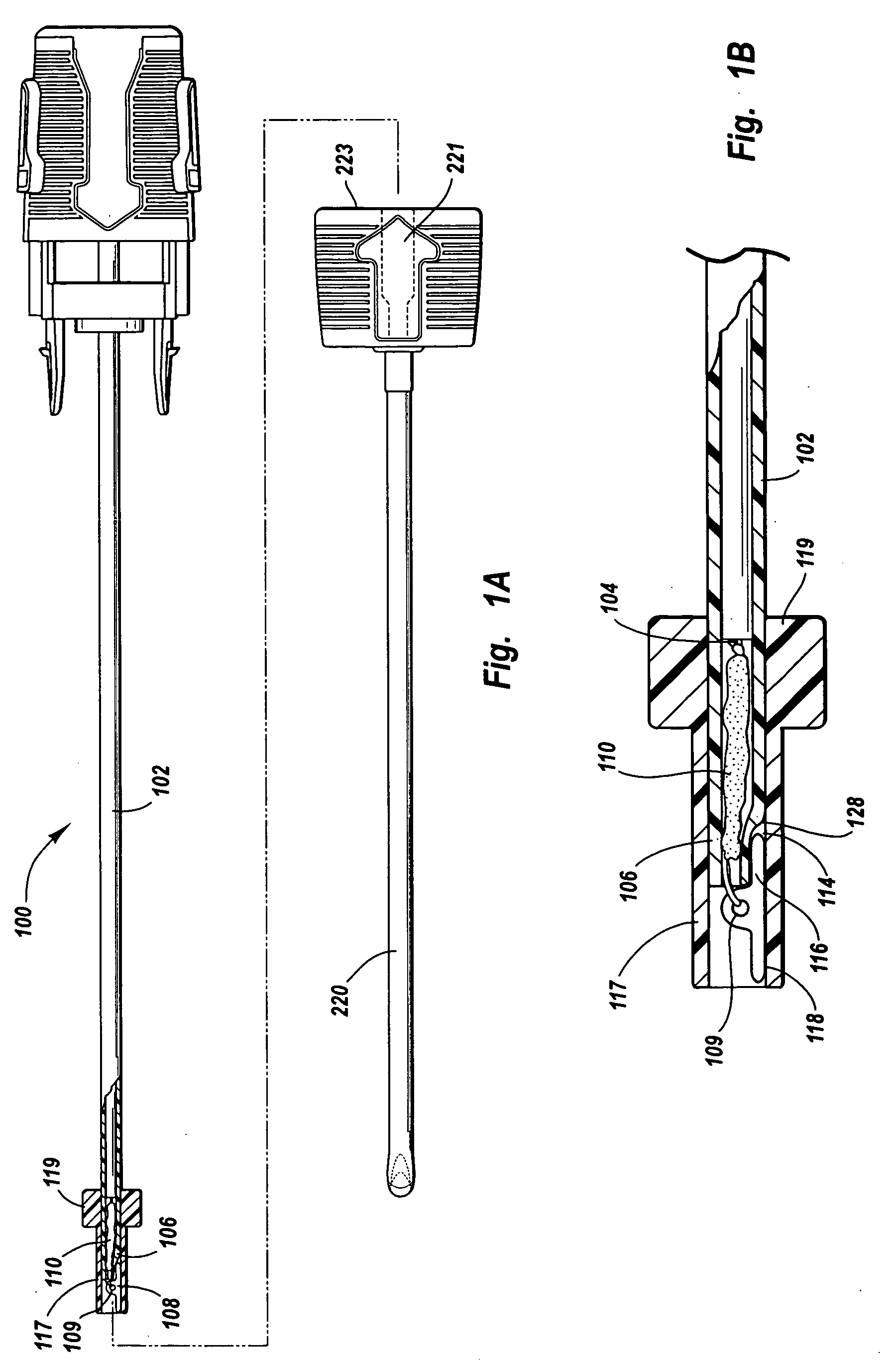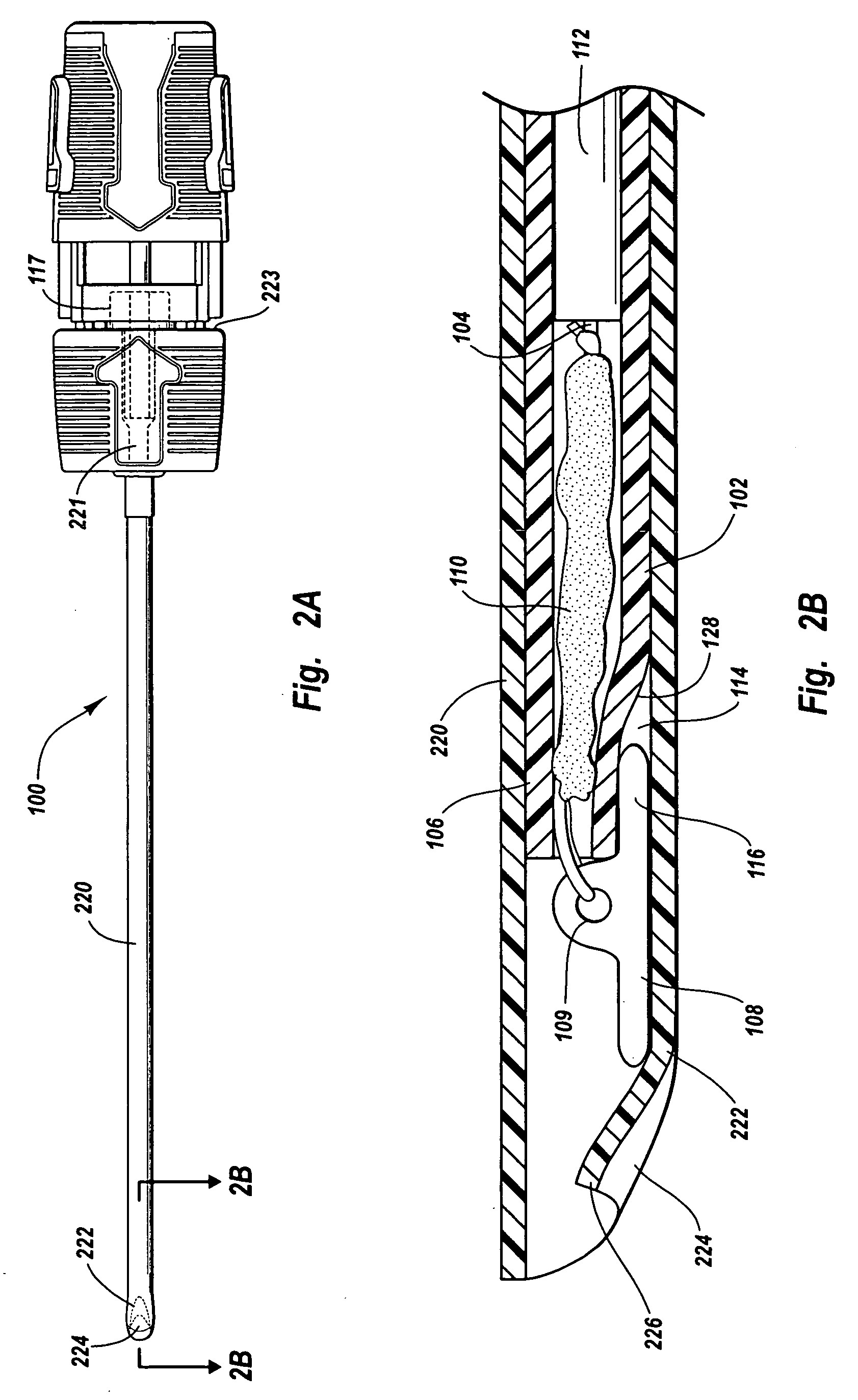Vascular puncture seal anchor nest
a technology of puncture sealing and anchor nest, which is applied in the field of medical devices, can solve the problems of reducing the effect of the anchor shuttle, unable to shut down the function, and negating the benefit of the device, and achieves the effect of reducing the anchor shuttl
- Summary
- Abstract
- Description
- Claims
- Application Information
AI Technical Summary
Benefits of technology
Problems solved by technology
Method used
Image
Examples
Embodiment Construction
[0034] As mentioned above, vascular procedures are commonly performed throughout the world and require access to a lumen through a puncture. Most often, the lumen is a femoral artery. To close the puncture, many times a closure device is used to sandwich the puncture between an anchor and a sealing plug. However, there exists a possibility for the anchor to not deploy, disabling the function and negating the benefit of the device. The present invention describes methods and apparatus to reduce or eliminate non-deployment or “shuttle” of a closure device anchor. While the vascular instruments shown and described below include insertion sheaths and puncture sealing devices, the application of principles described herein to reduce anchor shuttle is not limited to the specific devices shown. The principles described herein may be used to reduce anchor shuttle for any vascular closure device. Therefore, while the description below is directed primarily to arterial procedures and certain ...
PUM
| Property | Measurement | Unit |
|---|---|---|
| depth | aaaaa | aaaaa |
| distance | aaaaa | aaaaa |
| depth of penetration | aaaaa | aaaaa |
Abstract
Description
Claims
Application Information
 Login to View More
Login to View More - R&D
- Intellectual Property
- Life Sciences
- Materials
- Tech Scout
- Unparalleled Data Quality
- Higher Quality Content
- 60% Fewer Hallucinations
Browse by: Latest US Patents, China's latest patents, Technical Efficacy Thesaurus, Application Domain, Technology Topic, Popular Technical Reports.
© 2025 PatSnap. All rights reserved.Legal|Privacy policy|Modern Slavery Act Transparency Statement|Sitemap|About US| Contact US: help@patsnap.com



